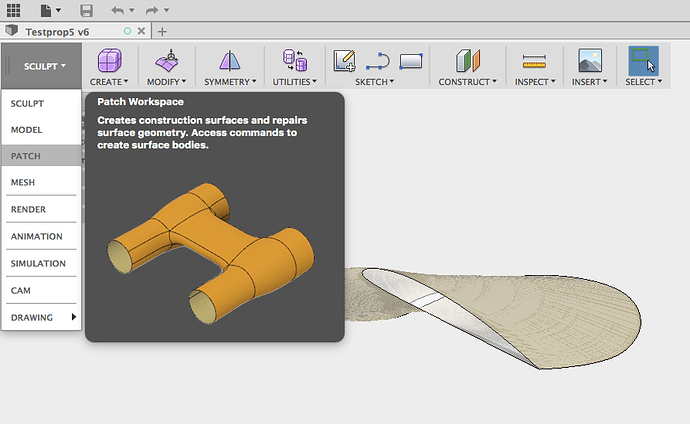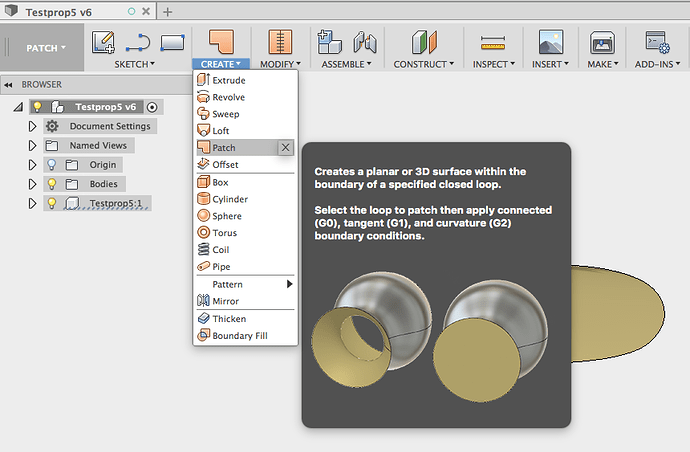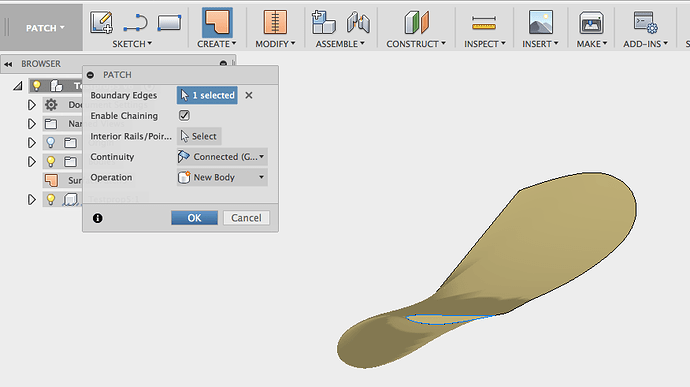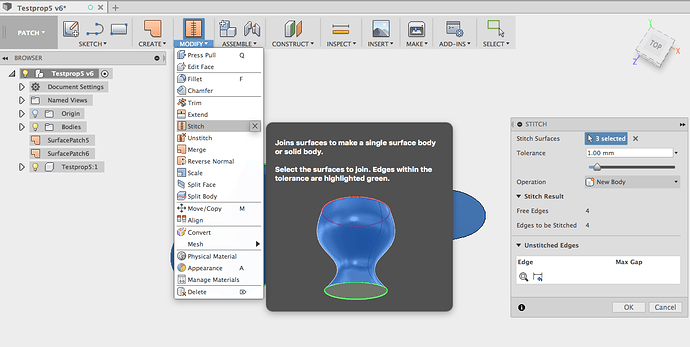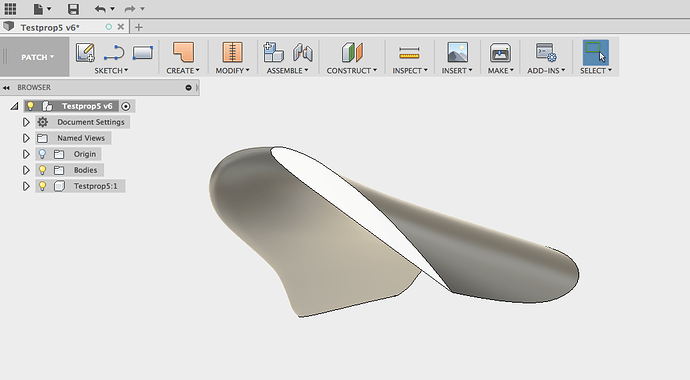Hey @Taylor, see ^^ … To help everyone with the CAD design here we should look into hooking your new parametric Fusion 360 prop setup to read blade shapes that come out of this JavaProp tool.
Hallo Meister,
would be glad to share a JavaProp blade with you and Taylor to hook it into the parametric Fusion prop.
Cheers,
Sascha
my friend has a CUDA underwater scooter with quite alot of trust. They use a very similar propp with adjustable pitch, I had some ideas to test it one day too.
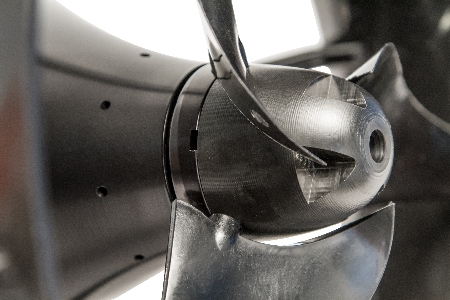
Wow ya thats amazing, and great to see that prop blade design else were as that is exactly what our prop software is showing us is the most efficient for the thrust and RPM we are looking to use. Thanks for sharing!
they seem to have made a gearbox for their new model too
Gears:
https://dive-xtras.com/wp-content/uploads/2015/11/019-1000-BOM.pdf
Prop assembly:
https://dive-xtras.com/wp-content/uploads/2015/06/propellerassembly.pdf
It looks very promising but for low speed I think. I’ve got and info from them that the prop has around 200rpm in the water at lowest speed.
hi, its interesting, i could buy that propeller and shroud assembly and give it a test,and see the results, im still a bit away from testing tho, you said 200rpm is its speed, what do you think will happen putting 3200rpm through it, wonder if it could handle it, or would it warp with the stresses,
it seems so slim in its design, compared to an outboard engine propeller etc, does having a larger surface area help with thrust, i haven’t got a 3d printer, so im trying to source existing parts out there, all though a friend has a few laths and things, planning to make most of the parts with alloy
Hi PowerGlider,
I got in touch with Lars Christensen (Fusion 360 guru with an own Fusion 360 tutorial channel on YouTube). He came back to me with a very simple solution. Once you imported the hull as a *.iges file from JavaProp, you switch to the patch workspace…
After that you select “create/ patch”…
Then you select a boundary edge of the airfoil “hull” and click “ok” in the dialog box. (do this for both open ends of the airfoil)…
This enables you to transform it into a “closed” hull. Last step is to “stitch” the three surfaces together to one body. Just select “Modify/ Stitch”, select the three surfaces and click on “OK”.
The result is a regular Fusion 360 body that can be integrated in a propeller design.
I also got in touch with Martin Hepperle (author of JavaProp) and asked him some questions about hydro prop design. He confirmed, that JavaProp is able to design proper hydro props but under consideration of some basic conditions. It’s a very long reply with lots of propeller voodoo in German. As soon as I have figured it all out and translated it to English, I give you an update on this, if you like.
@pacificmeister / Taylor: Now we might also be able to incorporate JavaProp propeller blades into you parametric propeller design?
Cheers,
Sascha
Great Job @Roboshack !!!
Cant wait to test a prop specifically designed for the speed, RPM and torque each of our setups provide… !
hi everyone, its good to see a tailor made design in the works, brilliant*
has anybody ever tested one of these prop/duct assembly’s, i was thinking to test the 150mm model, and maybe try different props using the duct body, i don’t want to risk buying one if there no good for the job
the duct on those propellers look like kort-nozzles. (low performance) you should go for rice speed nozzle (high performance nozzles with airfoil cross sections, not straight).
Actually with a efoil at max speed, a thin straight nozzle, purely designed for that would most likely be better. Both kort and rice nozzles are designed to give enhanced thrust at lower speeds. They do this by reducing tip losses. But eventually he shroud becomes drag at high speeds.
@Roboshack Could you please post the original answer of Martin Hepperle in German? I think there are a few native germans on the forum and they might profit from that.
@Dude No problem, here the original reply…
Im Wasser gibt es das Problem der Kavitation, das grob vergleichbar mit der Annäherung an die Schallgeschwindigkeit in der Luft ist.
Beides hat starke Auswirkungen auf die Profilumströmung und kann zu starkem Widerstand und Strömungsablösung führen.
In beiden Fällen sieht die Lösung ähnlich aus: die Profile bekommen eine große Dickenrücklage (z.B. 50-60% der Tiefe und müssen relativ dünn sein.
Unter Wasser hängt es von der Tauchtiefe ab, bei welchem (Unter-)Druck Kavitation auftritt - ein U-Boot hat es da leichter als ein Surfbrett.
Man muss versuchen, den gewünschten Auftrieb mit relativ wenig Unterdruck (-Cp) am Profilschnitt zu erzeugen, was bedeutet, dass die möglichen Auftriebsbeiwert begrenzt sind. Während man in der Luft problemlos Auftriebsbeiwert von 0.7 bis 1.5 für den Entwurf verwenden kann, muss man für Hydropropeller eher bei 0.2 bis 0.5 blieben.
Für eine genauere Untersuchung muss man sich die Cp Verteilung am Profil ansehen um dort festzustellen welche Cp-Werte örtlich (z.B. an der Profilnase) bei welchen Ca-Wert erreicht werden. Diese muss man dann mit dem “kritischen” Cp Wert vergleichen, der von der Tauchtiefe abhängt.
Siehe auch Hydroprops und Hydroprops .
Grob gesagt sollte also der Entwurf Profile mit großer Dickenrücklege und geringer Dicke haben und die Entwurfsauftriebsbeiwerte nicht zu groß sein.
Das sieht man auch schnell wenn man einen Schiffspropeller nachentwirft - er wird die relativ große Blattbreite des Originals nur erreichen, wenn man niedrige Auftriebsbeiwerte im Entwurf wählt.
Die Profile sollten nicht zu sehr gewölbt sein, die in JavaProp enthaltene MH-Reihe ist da nicht so gut, besser die Clark Y und E 193 Profile verwenden.
An der Nabe können diese dann im CAD noch aufgedickt werden um genügend Festigkeit zu bekommen. Da an der Nabe sowieso wenig Schub produziert wird, sollte diese nicht zu klein ausfallen (und den recht unwirksamen Bereich abdecken). Zur Blattspitze hin sollten die Profile eher so 5% oder dünner sein, da müsste man das Clark Y oder E 193 dann dünner machen. Dort würde auch das ARA D 6% Profil ganz gut passen.
Ansonsten würden Profile der NACA 64xxx und NACA 65xxx Reihen ganz gut passen, mit geringen Wölbungen von ca. 1%.
Im Internet findet man auch da ein oder andere Dokument zu Schiffsschrauben in dem man auch Profilformen erkennen kann.
Im klassischen Schiffsbau ist aber vieles sehr empirisch gemacht (z.B. die “Wageningen” Propeller), das ist nicht mehr unbedingt “State of the Art”.
Für JavaProp spielt die geometrische Profilform keine Rolle, es kommt nur auch die aerodynamische Charakteristik an (Nullauftriebsrichtung, Auftriebsbeiwert beim Entwurf). Die Geometrie taucht dann nur im Export wieder auf.
Man könnte die Profile auch hinterher im CAD Modell noch austauschen, sofern die Nullauftriebsrichtungen übereinstimmen. Die Auftriebsanstiege (Ca = f(alpha)) sind bei allem Profilen sehr ähnlich und praktisch unabhängig von der Profilwölbung. Der Widerstand (und damit der Wirkungsgrad) ist natürlich schon von der Profilform abhängig.
Der Export schreibt tatsächlich nur die Oberfläche, keinen Volumenkörper, da ja sowieso noch Anpassungen an der Nabe und an der Spitze vorgenommen werden müssen. Meistens ist es am besten die Profilschnitte zu einer neuen Oberfläche zu verbinden und vorher die Schnitt im Nabenbereich und an der Spitze zu modifizieren.
Uff, da bin ich Mal gespannt!
Very interesting. Now can you explain that to us like we are 5 year olds 
Well the easy part of this is to imagine you all as 5 year olds, the other part is really tricky.  Very much propeller voodo in German, as I originally said. Takes some time to figure it out step by step, even if you are a German native speaker.
Very much propeller voodo in German, as I originally said. Takes some time to figure it out step by step, even if you are a German native speaker.
Well said… Makes sense now, Cheers! 

